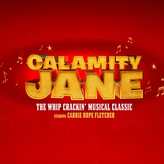Building a Set
- Elemental Theatre Company

- Sep 1, 2022
- 3 min read
Never before did I think that Pythagorus would be of use in my adult life, let alone in the theatre! But here I am installing triangular support beams onto the set of our latest production remembering the A2+B2=C2 of an age gone by.
When I began my journey into theatre, I was lucky enough to join an amateur dramatics society with more flats than the local council, stage flats that is. Production after production these backdrops were painted to represent old westerns, murder mysteries even pantomimes, we felt head and shoulders above the rest with our 2 dimensional representation of a high-street. With this group was also a store room full to the brim with props, some of which were originals from the groups formation over 60 years ago, the attic of the community centre they perform is was chocked full of costumes, dresses, fabric and accessories, as an AM-DRAM group, I had hit the jackpot!

As I explored theatre through time, watching more and more professional productions, the stage designers seemed to fit into one of two categories ‘simple yet effective’ or down right ‘ambitious’. Ambition can look cool, the realistic bleeding walls from a horror I saw a few years ago, to the splash zone of singing in the rain, when it complements the show these out there set designers have some funky ideas. However, the designers I most appreciate are those who take simplicity to the next level; a production of Equus with no set that uses lighting to move between past and present; the show Band Of Gold moving a skeleton set of metal garden furniture from stage left to stage right; to the broadway smash Dear Evan Hansen bringing on a bed, a sofa or a table to an otherwise black stage. Simplicity allowed the audience to focus on the actors on stage, set should only be used as a storytelling device.

Epic theatre will often use skeleton sets, if any, as the Brechtian style calls for simplicity with effective result, where the Stanislavsky theatre style would command a realistic set to suspend the belief of realism for the audience. Add into the mix Chekhov’s gun, the principle that if there is a gun on stage, you’d better hope someone fires it by the end of the show - in other words, why build an elaborate set with distracting features that add no further details to the narrative or style of the performance? When I think of this I go back to 15 year old me reading the joke shop names written on background believing this is high comedy… no Thomas, this is distracting storytelling.
In our last production Door to Door: 1994, I designed a piece of set which was simple, effective, and perfectly stylistically for the play - we will forgive my low level D&T skills and the shoe-string budget it was made on. Here was the brief:
“A sturdy table, which is also a front room with a mirror, which is also a front room with an opening window, which is also a front room with an operable cupboard, which is also a phone booth, which is also the dividing panel from TV’s Blind Date, oh and by the way it’s set in the 90’s”
Pop the kettle on, put on BBC radio 5 live, give me a hard hat and a Makita power tool set, and let me get to work.

At current ETC’s stock set is three 60x60x60 black cubes with optional back rests. Chairs if you will. The latest addition is 2 90x180 black flats on wheels, that’s right ETC are going basic and modular, and we are loving it! Want to see what a group of quirky thespians can do with a few sheets of MDF? Then buy yourself a ticket to one of our next shows and see what’s what!






















































Comentarios